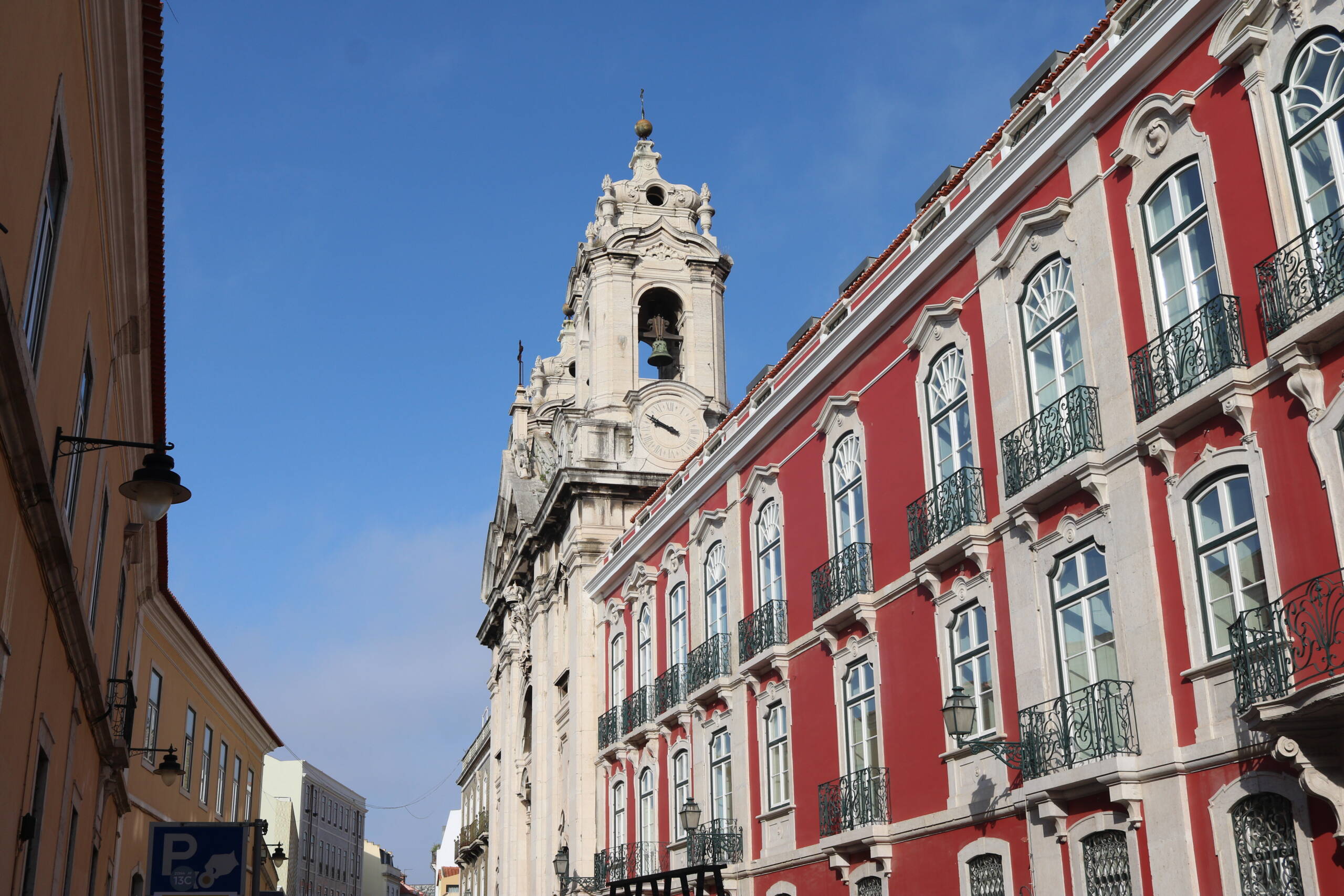Walking through Lisbon often feels like stepping into a painting where every stroke of color and curve of architecture tells a story centuries in the making. In this photograph, the eye is immediately drawn to the magnificent bell tower of a Baroque church, its pale stone façade catching the morning light. A clock sits just beneath the arched opening where the bell hangs, reminding passersby of the rhythm of city life. The ornate detailing, with its sculpted flourishes and golden finial, speaks to Lisbon’s layered history of grandeur, resilience, and artistry.

Just opposite, the bold red façade of a residential building glows with vibrancy against the deep blue sky. Its rows of windows, framed with white stone and topped with delicate arches, are each adorned with wrought-iron balconies—classic features of Portuguese urban design. The greenish hue of the ironwork contrasts beautifully with the red walls, creating a harmony that feels both traditional and timeless. The building’s roofline, with terracotta tiles angled toward the sun, completes the composition of a street that is both elegant and alive.
There is a certain charm in how Lisbon’s streets combine order with spontaneity. The geometry of windows and balconies is precise, yet the variety of colors and the aged textures of stone create a warm, human character. Walking here, one notices the small details: the lanterns mounted on walls, the subtle play of shadows, the hum of daily life that spills into narrow streets. The city feels intimate yet monumental, balancing the weight of its past with the energy of the present.
For a traveler, this moment captured in stone and color is an invitation to slow down, to look upwards as much as forwards, and to let the architecture of Lisbon tell its story. It’s in these streets—where red façades meet ivory towers under a clear Atlantic sky—that the city’s soul reveals itself, and where every corner feels like a postcard waiting to be lived.
Leave a Reply